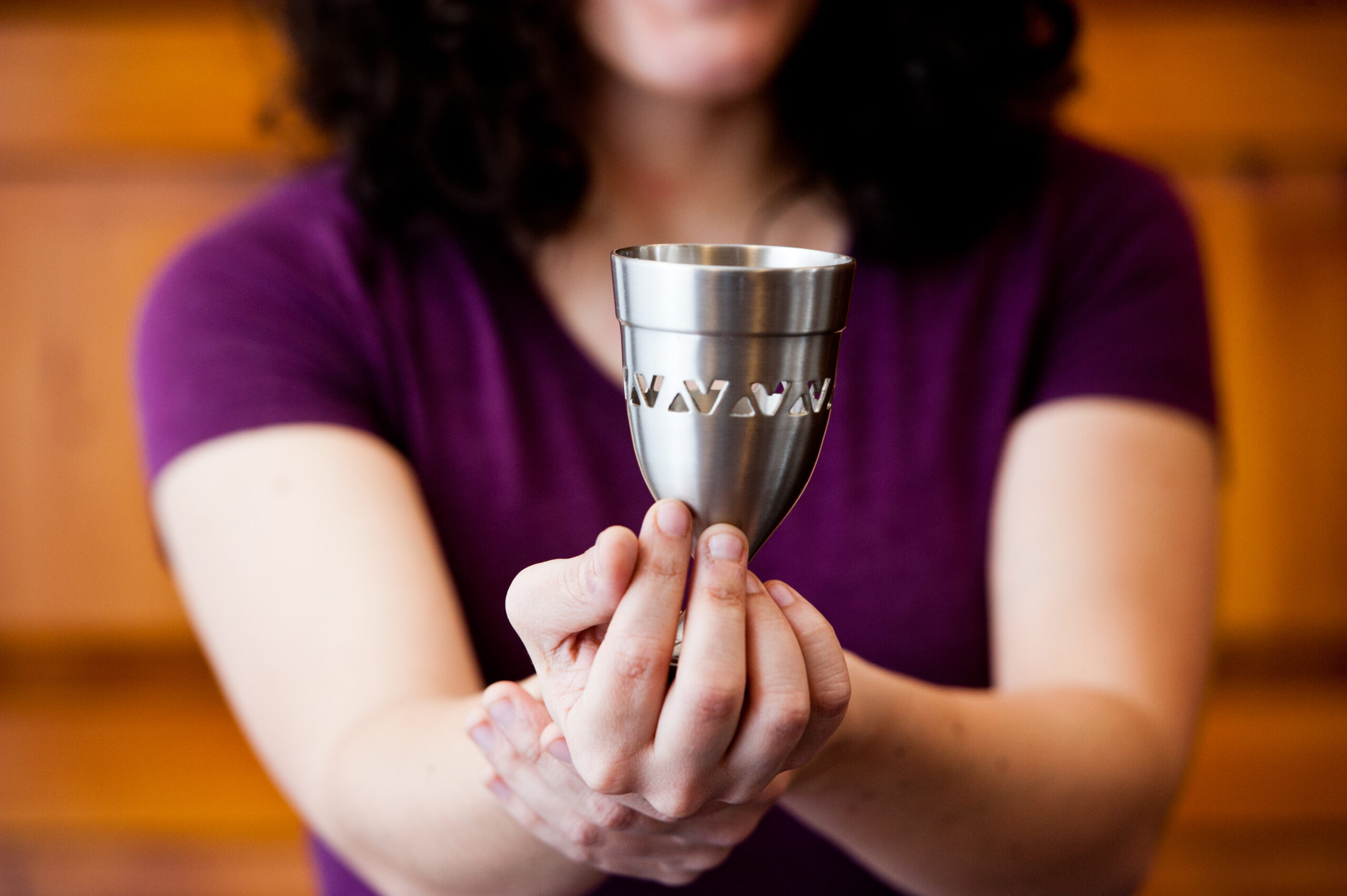This seder was created to welcome in the shmita (Sabbatical) year.
It is a template meant to be celebrated, enjoyed and adapted as participants desire.
Please do share your adaptations, improvements, suggestions, etc., with me, ncardin@comcast.net so we can have a record of what this year brought and the grist to refine the seder for the next shmita year (5782).
Ever since the first breath of creation, time has unfolded in cycles of seven. Six days reach their crescendo in the seventh day, Shabbat—the Sabbath, the day of rest. Six years reach their crescendo in the seventh year, shmita—the sabbatical, the year of renewal. Seven cycles of seven years reach their crescendo in the Jubilee year, the ultimate enactment of re-creation.
All three call forth nostalgic images of Eden, when humanity lived in abundance, peace, equity and ease. All offer a way of partial return. But there are differences among them: Jubilee is more fantasy than experience, more vision than practice. And while it remains part of our sacred narrative, it has nonetheless fallen out of our sacred calendar.
Shabbat, on the other hand, is a constant presence. It is celebrated weekly, as time apart, 25 hours of a lived dream dimension. We enter Shabbat by leaving the work-a-day world and cross into a domain that is edenic, “a taste of the world to come.” We are at leisure, eat well, avoid strife and pretend to create one world, diminishing the boundaries that daily divide us.
Shmita sits between these two. Neither a fantasy nor a constant presence, it is both a vision of a new reality and a practice to be lived in here-and-now. It happens in the same time and space as all other years, only we are to live this year differently, more equitably, more fully, more intentionally than the six years before. It is a year of harmony and celebration with the earth, when the land of Israel rests from the agricultural labors imposed upon her yet when she yields sufficient goodness for us all to thrive. It is a year of commonplace manna, when food is ours for the taking, but modestly, temperately, with a deep sense of gratitude and awareness; when debts are forgiven and there is equity for all; when property boundaries are suspended and all becomes once again part of the Commons. It is, in short, a year of rebooting, recalibration and realigning our assumptions about property, land use, economic justice and social equity. Not as a dream but as a reality.
Rosh Hashanah 2014 marks the next shmita year (the Hebrew year 5775). Jews around the world are seeking ways to
enter into the laws and spirit of this sabbatical year as they have never done before. They are extending its message beyond the boundaries of Israel to wherever they live; and extending the thrust of its ethic beyond the agricultural sector. To mark this moment, to help us begin this historic revisioning, renewal and re-imagining of the ways to live a year of shmita, we offer this Rosh Hashanah seder. It is modeled on the Jewish tradition of new year’s simanim, symbolic food, like the traditional apples dipped in honey, that represent the blessings we hope will be
ours.
The seder consists of six small cups or bowls arrayed on a decorative base plate.
This base plate represents the whole, the sweep of time, the sphere that encompasses and defines every 7-year cycle. For shmita is not just one segregated year, as Shabbat is not one segregated day. It is the year that frames and gives shape to all the other years, both those just past, and those yet to come. Upon this foundation plate rest the six cups or bowls. Together they represent the six attributes that define the essence of the shmita year, and a life lived in goodness, sacred striving and delight.
Slices of apples (and other perennial delicacies of your choice) are arrayed in the center of the base plate. These recall the fruits of Eden that sustained us, and the Tree of Knowledge that launched us on the irresistible human enterprise of curiosity, desire, exploration and pursuits. And they represent the perennial foods (fruits, nuts and berries) that grow on their own during the shmita year and that we gratefully eat at a time when we do not plow, sow, reap or commercially harvest the produce of the field.
THE SEDER
On this base plate set the following:
Cup One:
Honey representing Sova – Enoughness. Sova is the feeling of fullness without being stuffed; of contentment through what was given and not wanting anything more; of maximum satisfaction with minimum consumption and disruption. This first cup is filled with honey. Pass around the cup for all to dip the apples in the honey, say:
In this year of shmita, may we know no hunger, either spiritual or physical. May we be as readily sated with the delights of life as this cup is filled by these drops of honey.
Cup Two:
Wine (consider fruit wine, including Passion Fruit Wine from Israel or homemade date wine)* signifying Hodayah – Gratefulness. Hodayah is the feeling of gratitude, of deep satisfaction and elusive peace with what we have received. Wine is the age-old symbol of celebration, an expression of shared gratitude. It takes years for the vineyard to grow and produce grapes and time enough for the wine to ferment. On the human side, this requires steadfastness, peace, stability, and longevity; on nature’s side it requires cool and heat and sun and rain and rich soil all in the right amounts – surely things to be grateful for. This cup is filled to the rim with the wine. (Wine cups at everyone’s place may be filled with this too.) Hold it up and say:
In this shmita year, may we know peace and be strangers to disappointment and disruption. May the earth find renewal amid its rest. And may gratitude fill us all as the wine fills this cup.
Cup Three:
Figs representing Revaya – Abundance. Revaya is the awareness of the vast resources of a healthy world, the earth’s ancient capacity of growth and self-renewal, and our call to keep it going. Figs are not like most other fruit crops. The fruits on one tree do not ripen all at once but one by one, each in its own time. They offer abundance without surfeit. This cup is filled with figs (either whole or cut, fresh if available though dried figs are fine too), speckled and spangled with seeds. Pass around the cup for all to take from it and say:
In this year of shmita, may we recognize abundance and know no waste. May we celebrate the vast goodness that lies
within even the most modest cache of life; may we reverently receive life’s abundance and, like the continuous fruiting of the fig tree, give what we can, at the time that is right.
Cup Four:
Raisins representing Hesed – Goodness, Kindness, Generosity. Hesed is a response to our gratitude for the varieties of gifts we have received in this world. Having received we are moved to give. Such is the nature of the gift. The raisins heaped in this cup signify the sweet, satisfying substance that can be given even after other extractions of goodness have been taken. They recall the leaves, the juices, the wine, the vinegar, the shade, the wood and delight that are all gifts of the grape. In response to all that we have been given, we are moved to give more. Pass around the cup for all to take from and say:
In this shmita year, may we know no greed. May we recognize the gifts we have received and in return realize the manifold ways of giving that lie within each of us.
Cup Five:
Pomegranate representing Poriyut – Fertility. Poriyut is the creativity, the dynamism, the fecundity that characterizes the majesty of nature. It is what allows us to eat during this year of fallowness and renewal. It is the dormancy that bursts forth, in the right conditions, inspiring the human gifts of imagination, discovery and awe. This cup is filled with pomegranate seeds, symbols of overflowing fertility. Pass the cup around for everyone to taste and say:
In this shmita year, may we know no barrenness, no emptiness. May this year of material enoughness bring forth overflowing acts of discovery, delight and spiritual bounty.
Cup Six:
Dates representing Otzar – The Commons. Otzar is earth’s shared resources, owned by none and gifted to all. It is the storehouse of the ages, the fundamentals of life that we all depend upon. It is the stuff of earth and society, natural and cultural, that we share now in our lifetimes and leave behind for others. Our stories, our knowledge, our goods, our homes, our earth. This cup holds stuffed dates, signifying all that we share in the giving to and taking from the Commons. (Another option: put a few symbolic dates in the center cup but in addition, array dates—pitted and sliced—on the outer edge of a serving plate, surrounding a center mound of stuffing: chopped almonds, walnuts, pistachios or pine nuts that have been soaked in honey and wine. Let everyone fill a date with the sweet filling and give it to someone else at
the table.) Everyone takes a date and says:
In this shmita year, may we know no isolation, no loneliness, no selfishness. May we recognize that we are joined in partnership to the earth, and to one another through our common heritage, the Torah, our past and our future that bind us to one another forever, throughout the cycles of space and time.
Then wash it all down with a drink of l’chaim.
Note: This multi-layered seder is a tradition that can be adapted to mark every year of the shmita cycle. On Rosh Hashanah of the shmita year (the seventh culminating year), all the cups are filled, celebrating the completion of one shmita cycle. The following year, the first year, only the first cup with the honey—and the apples—appear on the plate. The second year, the first two cups; the third year, the first three, and so on till the completion of the cycle and the celebration of the next shmita year.
Biblical shmita texts:
Exodus 23:10–11
Leviticus 25:1–7
Leviticus 25:20–22
Deuteronomy 15:1–6
* Only wine that includes grapes qualifies for the Kiddush blessing: borei pri hagafen, who creates the fruit of the vine.
“Shehakol nihiyah bed’varo” is said over fruit wines without a grape base. If the blessing over wine (Kiddush) and bread (hamotzi) have already been said at the beginning of the meal, no additional blessings need to be recited over the foods of the seder plate.
August 2014, Av 5774













